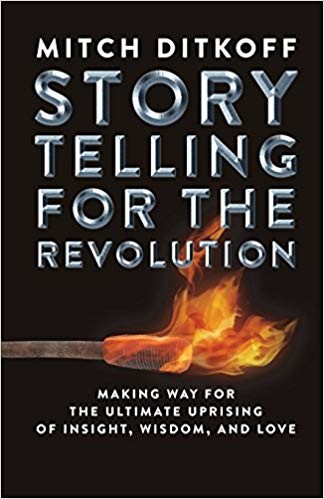25 Reasons Why Brainstorming Sessions Fail in Your Company

Whenever I ask my clients to tell me about the quality of their company's brainstorming sessions, they usually roll their eyes and grumble, noting several of the phenomena below.
Recognize any of them in your organization?
1. Lame facilitation
2. Wrong problem statement
3. Unmotivated participants
4. Hidden (or competing) agendas
5. Insufficient diversity of participants
6. Addiction to the status quo
7. Lack of clear ground rules
8. Insufficient trust in the facilitator
9. No transition from "business as usual"
10. Lack of robust participation
11. The extroverts take over
12. Habitual idea killing
13. Attachment to pet ideas
14. Discomfort with ambiguity
15. Hyper-seriousness

16. Endless interruptions
17. People come late and leave early
18. Premature adoption of the first "right idea"
19. Group think
20. Hierarchy, turfs, and competing sub-groups
21. Imbalance of divergent and convergent thinking
22. No tools or techniques to spark creativity
23. Inadequate idea capture methods
24. Premature evaluation
25. No meaningful follow through
Free the Genie sessions eliminate all of the above
Posted by Mitch Ditkoff at 07:45 AM | Comments (5)
July 13, 202110 Ways to Help Left Brainers Tap Into Their Creativity

If your job requires you to lead meetings, brainstorming sessions, or problem solving gatherings of any kind, chances are good that most of the people you come in contact with are left-brain dominant: analytical, logical, linear folks with a passion for results and a huge fear that the meeting you are about to lead will end with a rousing chorus of kumbaya.
Not exactly the kind of mindset conducive to breakthrough thinking.
Do not lose heart, oh facilitators of the creative process. Even if you find yourself in a room full of 10,000 left brainers, there are tons of ways to work with this mindset in service to bringing out the very best of the group's collective genius:
1. Diffuse the fear of ambiguity by continually clarifying the process
Most left-brain-dominant people hate open-ended processes and anything that smacks of ambiguity.
Next time you find yourself leading a creative thinking session, make it a point to give participants, early is the session, a mental map of the process you'll be using. Explain that the session will consist of two key elements: divergent thinking and convergent thinking.
In the divergent segment, you'll be helping people consider non-traditional approaches. In the convergent segment, you'll be helping people analyze, evaluate, and select from the multiplicity of ideas they have generated.
If participants are going to get uneasy, it will happen during the divergent segment. Your task? Periodically remind them of where they are in the process. "Here's our objective," you might say. "Here's where we've been. Here's where we are. And here's we're going. Any questions?"
2. Get people talking about AHAS! they've had
No matter how risk averse or analytical people in your sessions may be, it's likely that all of them -- at some time or another -- have had a really great idea.  "Creativity" really isn't all that foreign to them (although they may think it is). All you need to do to get them in touch with that part of themselves is help them recall a moment when they were operating at a high level of creativity.
"Creativity" really isn't all that foreign to them (although they may think it is). All you need to do to get them in touch with that part of themselves is help them recall a moment when they were operating at a high level of creativity.
Get them talking about how it felt, what were the conditions, and what preceded the breakthrough. You'll be amazed at the stories you'll hear and how willing everyone will be, after that, to really stretch out.
3. Transform limiting assumptions
One of the biggest obstacles to creativity is the assumption-making part of our brain -- the part that is forever drawing lines in the sand -- the part that is ruled by the past. Most people are not aware of the assumptions they have -- in the same way that most drivers are not aware of the blind spot in their mirror.
If you want people to be optimally creative, it is imperative that you find a way to help them identify their limiting assumptions about the challenge they are brainstorming. "Awareness cures," explains psychologist Fritz Perls. But DON'T get caught in a lengthy discussion about the collective limiting assumptions of the group. This is often just another way that left-brain dominant participants will default to analyzing and debating.
Instead, lead a process that will help participants identify and explore their limiting assumptions. Then, time allowing, help them transform each of these limiting assumptions into open-ended "How can we?" questions for brainstorming.
4. Encourage idea fluency
Dr. Linus Pauling, one of the most influential chemists of the 20th century, was once asked, "How do you get a good idea?" His response? "The best way to get a good idea is to get lots of ideas and throw the bad ones away."
That's why "Go for a quantity of ideas" is the first rule of brainstorming. You want to encourage people, early and often, to go for quantity. This will short circuit participants' perfectionistic, self-censoring tendencies -- two behaviors that are certain death to creativity.
5. Invite humor
The right use of is a great way to help people tap into their right brains. Indeed, "haha" and "aha" are closely related. Both are the result of surprise or discontinuity. You laugh when your expectations are confronted in a delightful way.
Please note, however, that your use of humor must not be demeaning to anyone in the room. Freud explained that every "joke" has a victim and is used by the teller to gain advantage over the victim -- a way to affirm power. And when a group finds itself in the realm of power (and the yielding of power), it will undoubtedly end up in left brain territory.
You don't want to feed that beast.
Instead, set the tone by telling a victimless joke or two, or by your own self-deprecating humor. But even more important than "joke telling" is to allow and encourage a free flowing sense of playfulness.

6. Do the right brain/ left brain two-step
Brainstorming for 3, 4 or 5 hours in a row is unusually exhausting, resulting in the "diminishing returns" syndrome. Creative thinking, like life itself, follows natural laws. Day is followed by night, winter by spring, inbreath by outbreath.
That's why the design of your creative thinking session needs to alternate between the cerebral and the kinesthetic -- between brainstorming and some kind of hands-on, experiential activity. By doing this two-step, participants will stay refreshed and engaged.
7. Periodically mention that chaos precedes creative breakthroughs
Left-brained, logical people are rarely comfortable with ambiguity, chaos and the unknown. It seems messy. Disorganized. Downright unprofessional. Indeed, much of the Six Sigma work being done in corporations these days is to reduce variability and increase predictability.
Paradox alert!
If you want to get really creative, you will need to increase variability and help participants get more "out of control." Picasso said it best, "The act of creation is first of all an act of destruction." Tom Peters said it second best, "Innovation is a messy business."
So, when you sense that your session is filled with ambiguity-phobic people, remember to mention how it's normal for ambiguity to precede a creative breakthrough. You may even want to mention how you will be purposefully infusing the session with moments of ambiguity, just to prime the creative pump.
8. Establish criteria for evaluation
The reason why ideas are usually considered a dime a dozen is because most people are unclear about their process for identifying the priceless ones. That's why a lot of brainstorming sessions are frustrating. Tons of possibilities are generated, but there is no clear path for winnowing and choosing.
Let's assume, for example, that the session you facilitate generates 100 powerful, new ideas. Do you have a process for helping participants pare the 100 down to a manageable few? If not, you need one. Ideally, the criteria for selecting ideas will be clarified before the session and introduced to participants early in the session.
Please note that there is some debate amongst brainstorm mavens as to when to offer the criteria. Some say this should happen at the beginning of the session (to help assuage the left brain need for logic and boundaries). Others suggest delaying the identification of criteria until just before the idea evaluation process. Either way will work. Your call.
9. Be a referee when you have to
No matter how many ground rules you mention about "suspending judgment" or "delaying evaluation," you are going to have some heavy hitters in the room just waiting for a moment to doubt your approach or "the process."
Indeed, one of the favorite (often unconscious) strategies of some left-brainers is to debate and question the facilitator every step of the way. While you want to honor their concerns and right to speak their truth, you also want to hold the bar high for the intention behind the brainstorming session -- and that is to challenge the status quo, entertain the new, and create space for imaginations to roam.
Don't be afraid to be firm with participants who want to control the session. At the very least, ask them to suspend their need for "convergence" (i.e. evaluation, judgment, decision making) to the end of the session when there will be plenty of time to exercise that very important muscle.
10. Consult with the tough people on the breaks
Every once in a while, a really opinionated person shows up in a session -- someone who is probably very smart, competent, experienced, with a big BS detector, and just enough arrogance to make you feel uncomfortable. These people can really affect the group, especially if they hold positions of power in the organization.
In the best of all worlds, these people would always be on your side. They won't be. Be careful about playing to these people in a neurotic attempt to get their approval. You won't get it. But DO seek them out on breaks and engage them. Get them talking. Pay attention. See if you can pick up any useful feedback or clues about revising your agenda or approach.
Even though you wouldn't choose to be trapped on a desert island with them, these folks may turn out to be a huge blessing -- because they are carriers of a particular sensibility that needs to be honored. More than likely, some of the other people in the room are feeling the same thing, but have been too polite to show their true colors. So, don't be afraid of these people. They can be a very valuable resource.
Idea Champions
Brainstorming for left-brainers
Right-brain teaching stories
Posted by Mitch Ditkoff at 10:43 PM | Comments (3)
December 11, 2019On Creating an Innovation Mindset

If you want to spark innovation in your organization and are looking for the diamond cutters stroke, consider storytelling. Since 1987, I've tried everything under the sun to help my clients raise the bar for innovation. What I've discovered is that innovation begins in the mind and that unless people are in the right mindset, innovation will never be more than a pipe dream. Storytelling, I've learned, is the simplest, fastest, most memorable way to get people into an innovation mindset. Here's how we do it. And if you only have 90 minutes, this is how we do it. Its also boosts employee engagement.
I wrote the book
The back story
In our clients words
Posted by Mitch Ditkoff at 11:10 AM | Comments (2)
October 06, 2019A Real Life Example of the Power of Giving Feedback

Most Fortune 500 companies have some kind of corporate strategy in place for ratcheting up their innovation efforts. Consultants are hired. CEOs give pep talks. And internal initiatives are launched.
To the casual observer, it all looks good, but few of these initiatives ever amount to anything In fact, research indicates that 70 percent of all change initiatives fail.
Why such a low percentage? It depends on who you ask. Senior leaders see it as a workforce issue. The workforce sees it as a senior leader issue. Consultants see it as an issue their company is best suited to resolve. And the occasional in-house astrologer sees it as a Gemini in Pluto issue. Bottom line, nobody really knows.

Here's how I see it: one of the biggest (and least addressed) reasons why most change initiatives fail can be traced back to the cro-magnon way most innovation-seeking people give and receive feedback -- especially when it comes to pitching high concept ideas.
Case in point: Some years ago, Lucent Technologies asked me to facilitate a daylong "Products of the Future" ideation session for 75 of their best and brightest. The pay was good. The challenge was compelling. And I was going to have carte blanche to design the session just the way I wanted.
Or so I thought.
The woman who had contacted me, I quickly found out, reported directly to the CEO. So far, so good. And her concept of the session was spot on -- that the CEO and his Direct Reports (a new rock band?), would make an appearance at the end of the day to listen to five BIG IDEA pitches and then give their feedback, real-time.
Theoretically, this made perfect sense. But theory and reality are two very different things -- kind of like the difference between asking your teenage daughter to clean up her room and her actually doing it.
The harsh reality is this: The vast majority of Senior Leaders are not very skillful when it comes to giving feedback -- especially in response to ideas that challenge the status quo. "Feedback," for them, has become code for "With all due respect, let me tell you why your idea sucks".
As a facilitator of high profile brainstorming sessions, I cannot, in good faith, allow this all-too-predictable dynamic to play itself out. Not only will potentially profound ideas be prematurely dismissed, the hard-working, brilliant people who have spent all day generating and developing these ideas will become royally pissed, disempowered, humiliated, passive/aggressive, and depressed. The result? Very few of them will want to participate in future sessions.
So I told the consultant-seeking woman from Lucent that I, in service to the outcomes she was about to hire me to ensure, needed to meet with her CEO so I could teach him and his team how to give effective, humane feedback to a roomful of 75 future product generating optic fiber geniuses.
 "Impossible!" was her response. "Our CEO is very busy man -- and besides... he doesn't like consultants."
"Impossible!" was her response. "Our CEO is very busy man -- and besides... he doesn't like consultants."
"Got it," I said, quickly assessing my options. "And thank you, so much, for your kind invitation to facilitate the session, but I must respectfully decline" -- and, with that, I began packing up my briefcase.
This, shall we say, caught her slightly off guard. "I... don't understand where you are going with this," she replied.
"Look," I said. "If you want to get meaninful results from an all-day brainstorming session, especially if you are flying people in from who knows where, we've got to be absolutely sure that the feedback at the end of the day is done well. I am not going to walk 75 of your best and brightest people off the plank."
I could tell that my unexpected feedback was registering. "OK, OK...but the best I can do is get you five minutes with him during the coffee break just before the report outs".
"Great," I said. "I'll take it."
Fast forward two months.
From 8:30 am -- 3:00 pm, 75 of Lucent's most brilliant technologists conjured up products that made my head spin. The room was abuzz with glorious possibilities. The sense of accomplishment was palpable. At 2:45 they selected five of their best ideas and summarized them on flipcharts. At 3:00, it was time for coffee and sugar, me craning my head for the CEO and his merry band of direct reports.
I envisioned him to be a tall man, silver-haired, with a large Rolex and a steely look in his eyes -- someone who might be good friends with the Governor and eventually have his portrait hanging in the lobby at headquarters. He was, much to my surprise about 5'6", wearing a Mickey Mouse t-shirt, loafers, and no socks. My kind of guy.
"Rich," I began, extending my hand. "Welcome, Mitch Ditkoff here from Idea Champions, facilitator of today's extraordinary ideation session, "how would you like to learn a simple technique in the next five minutes that will not only take all the dread out of giving feedback, but spark some seriously powerful idea development on the spot?"
He looked at me as if I'd just given him the holy grail. "You're on!"
"Great. Here's how it works," I began. "When an idea is pitched, first say what you LIKE about it -- the upside, what's promising. After a few genuine likes, then express your CONCERNS -- the stuff you probably wanted to say in the first place. But for each concern you express, it will be your responsibility to follow it with a SUGGESTION, a way that would resolve your concern and keep the idea alive Got it?"
"Got it."
"Oh... one more thing, Rich. If you forget to use the method, do I have your permission to remind you?"
"Absolutely".
The senior team took their place on stage, sitting behind a table, draped in black, that reminded me of the Nuremberg Trials. The 75 brilliant brainstormers took their seats at round tables -- everyone attentively listening to me describe the feedback process that was just about to unfold.

The first BIG IDEA pitch was excellent -- a compelling idea for a telecommunications platform of the future that was utterly mind blowing. The audience applauded, I acknowledged the presenter, and then gave the floor to the CEO, reminding him to use the feedback technique I'd taught him just a few minutes ago -- which he proceeded to do for, oh, maybe 30 seconds or so.
After that? It was Apocalyse Now meets The Godfather, with a little Don Rickles in Vegas thrown in for good measure, a scene I'd witnessed countless times before in corporate America -- the kneejerk, reptilian-brained, go-for-the-jugular tendency most senior executives have to focus on what's wrong with a new idea before what's right.
Speaking into the mic in my best baritone imitation of the Wizard of Oz, I quickly intervened.
"Oh Mr. CEO of a very large and profitable telecommunications company. Remember the LCS technique! First your LIKES, then your CONCERNS, then your SUGGESTIONS."
In an optic fiber nanosecond, he sheepishly smiled, thanked me for the reminder, and returned to the technique.
The rest of the session went off without a hitch. Five powerful ideas got pitched. Seven of Lucent's top executives weighed in with insight, honesty, and graciousness. And 75 aspiring innovators experienced something they had probably never experienced before -- that it was possible to spend all day brainstorming "out there" possibilities and get the kind of feedback from senior leadership that was honorable, empowering, easy-to-listen to, and immediately helpful.
SO WHAT? Ever hear the phrase "ideas are a dime a dozen." Of course you have. It's one of the classic truisms we were all brought up to believe. That old saw, however, is less about ideas being inconsequential, than it is about people not knowing how to elicit their value. Granted, not every idea is worth developing, but far too many good ones are lost along the way because the person to whom the idea is pitched is blinded by their own knee jerk reactions.
The literature is filled with examples of great ideas whose value was not immediately recognized. The steam engine. The MacIntosh. FedEx. And the Post-It Note just to name a few. All of them were pitched to the "powers-that-be" and all were victims of knee jerk, naysaying, idea killing behavior. Yes, it's true, many senior leaders beat the drums for "out of the box thinking". But when push comes to shove, as it often does, their drumming is more like fingernails on the edge of an office desk than a conga player with fire in his eyes. So let's give our senior leaders what they need to make the shift from theory to practice -- and that is a simple method for them to respond to new and untested ideas in a way that increases the odds of innovation actually happening.
NOW WHAT? Think about your style of responding to new ideas. Do you listen? Do you pause long enough to see the seed of innovation? Do you give meaningful feedback in a humane way? And what about your organization? Do people know how to give and receive feedback? Do they take the time? Does the process increase the odds of innovation becoming a reality? If not, what can you about it this week to turn things around?
Posted by Mitch Ditkoff at 06:46 PM | Comments (0)
March 20, 2019Big Blues From the Viagra People

In 1999, I conceived and co-founded (with Paul Kwicienski) the world's first interactive business blues band, Face the Music.
The concept was a simple one: help organizations increase teamwork and decrease complaint by getting employees to write and perform original blues songs.
The concept resonated with a lot of industries, especially Big Pharma.
Oh yeah, they had the blues, lots of blues, like the "Now We Gotta Compete with Generic Drugs from Canada Blues," and the "No One Trusts the Drug Companies Anymore Blues," and the always popular, "Our Pipeline Is Empty, But Our Inbox is Full Blues."
So we weren't all that surprised when Pfizer came calling...
They had a big conference coming up and wanted to do "something different" to engage participants -- all of whom were high ranking business leaders.
Though our approach seemed risky to them at first, our testimonials from other Fortune 500 companies were proof enough we were the real deal for them to sign on the dotted line.
And so they did.
Unlike most bands -- or business simulations, for that matter -- our service began long before we took the stage.

For each client wanting the complete experience, we'd write a custom blues song weeks before -- a kind of musical caricature of their company that we'd perform to kick off our performance -- a modern day Greek Chorus routine that loosened up audiences while modeling the message of the evening -- to speak (or in our case, sing) the truth.
And though we always shared our lyrics with clients long before an event, rarely were we asked us to modify what we wrote.
Pfizer was a different story.
From their perspective, our lyrics were "incendiary, politically incorrect, and might be taken the wrong way."
Customer-focused as we were (and not wanting to blow a good pay day), we revised our lyrics overnight and submitted version 2.0 the first thing in the morning.
Pfizer didn't like our new version, either. Or version 3.0, 4.0, or 5.0.
After five failed attempts, we decided to drop the custom song and focus on the classic blues songs that made up the bulk of our play list.
But doubt had crept into our client's mind. He was now officially nervous and wanted to see the lyrics to all our songs.
"Piece of cake," we reasoned to ourselves. The lyrics we'd be sending him had been performed for more than a hundred years all over America and were a huge part of the DNA of the nation.
True. But they weren't part of Pfizer's DNA. Our client had major issues with every song we sent them.
So we emailed him the lyrics to another ten classic blues songs. He rejected those, too.
Now, we had the blues. Like the legendary Robert Johnson, we stood at the crossroads, Blackberries and guitars in hand.
"Gentlemen," I began the damage-control conference call in the most corporate voice I could muster, "with all due respect, you have just rejected the lyrics of the most popular 20 American blues songs from the past hundred years. Remember, you are engaging the services of a blues band, not a polka band. You've got to have more trust in us."
Ooooh... the "T" word!
They hemmed. They hawed. Them hemmed again. And then with a semi-shrug of their collective shoulders and the growing recognition that their event was just a few days away, they chose the seven tamest songs and gave us a tepid thumbs up.
"But remember!" they warned, "the show must end no later than 9:30 sharp. Not a minute more."
Show time!
When we got to the venue, I could tell we were in for an interesting night.
Though our client greeted us pleasantly enough, something was off. Outwardly, he was fine. Inwardly, he was anxious, uptight, constricted, nervous, sweating, and silently obsessing about how he was going to cover his ass should his worst nightmares about the evening come true.
The band picked up on his mood and immediately tightened up.
Knowing that good music doesn't issue forth from tight musicians, I sent the band backstage for a glass of wine and some small talk while I filibustered with the client -- the theater now rapidly filling with hundreds of people who made a lot more money than we did.

"Remember," the client reminded me again before the lights went down, "the show must end at 9:30 sharp!"
The band's first two songs that night were lame. Very lame. Channeling the tension of our neck-on-the-line client, the band was playing it safe -- not exactly a formula for foot stomping blues.
By the third song, thank God, the band found its groove. The audience relaxed and the songs they wrote and performed were some of the funniest we'd heard in a while.
I looked at my watch. It was 9:27. Quickly, I signaled the band to wrap things up when, out of the corner of my eye, I noticed the client making his way to the stage.
Actually, "making his way" wasn't the right phrase to describe his approach. "Storming the stage" was more like it.
I looked at my watch again. Now it was 9:28 and the client was getting closer by the nanosecond. I spoke faster, much faster, doing my best to finish before the bewitching hour
Two sentences from closure, the man bounds up the stairs and lunges towards me.
"Keep playing!" he blurts. "Tell the band to keep playing! This is really going well! Forget the 9:30 deadline. Keep playing!"
I signal the band and they segue into BB King"s "Let the Good Times Roll" -- the 12-minute version. South Side Denny takes off on a blistering guitar solo.
South Side Slim is wailing at the top of his lungs. Screaming Sweet Pea Fradon is bringing down the house. Blind Lemon Pledge is on top of his game.
Everyone in the audience is singing and dancing and clapping and laughing.
The pharmaceutical blues? Gone. At least for the moment
Excerpted from Storytelling at Work
For more on Face the Music, click here or here.
Check out our Six Sigma Blues.
Go beyond the business blues keynotes
Posted by Mitch Ditkoff at 01:56 AM | Comments (0)
December 21, 2018The Martial Arts of the Mind

Ten years ago I was invited to teach a course on "Innovation and Business Growth" at GE's Crotonville Management Development Center for 75 high potential, business superstars of the future.
The GE executive who hired me was a very savvy guy with the unenviable task of orienting new adjunct faculty members to GE's high standards and often harsher reality.
My client's intelligence was exceeded only by his candor as he proceeded to tell me, in no uncertain terms, that GE gave "new instructors" two shots at making the grade -- explaining, with a wry smile, that most outside consultants were intimidated the first time they taught at GE and weren't necessarily at the top of their game.
I'm not sure how you say it in Esperanto, but in English what he said translates as "The heat is on, big time."
I knew I would have to raise my game if I expected to be invited back after my two-session audition was over.
And so I went about my business of getting ready, keeping in mind that I was going to be leading a 6-hour session for 75 of GE's "best and brightest" flown half way around the world -- high flying Type A personalities with a high regard for themselves and a very low threshold for anything they judged to be unworthy of their time.
I had five weeks to prepare, five weeks to get my act together, five weeks to dig in and front load my agenda with everything I needed to wow my audience: case studies, statistics, quotes, factoids, and more best practices than you could shake an iPhone at.
I was ready. Really ready. Like a rookie center fielder on designer steroids, I was ready.
Or so I thought.
The more I spoke, the less they listened. The less they listened, the more I spoke, trotting out "compelling" facts and truckloads of information to make my case as they blankly stared and checked their email under the table.
Psychologists, I believe, would characterize my approach as "compensatory behavior."
I talked faster. I talked louder. I worked harder -- attempting in various pitiful ways to pull imaginary rabbits out of imaginary hats.
Needless to say, GE's best and brightest -- for the entire 45 minutes of my opening act -- were not impressed.
Clearly, I was playing a losing game.
My attempt to out-GE the GE people was a no-win proposition. I didn't need new facts, new statistics, or new quotes. I needed a new approach -- a way to secure the attention of my audience and help them make the shift from left-brained skepticism to right-brained receptivity.
And I needed to do it five minutes, not 45.
The next few days were very uncomfortable for me, replaying in my head -- again and again -- my lame choice of an opening gambit and wondering what, in the world, I could do to get better results in much less time.
And then, like an unexpected IPO from Mars, it hit me. The martial arts!

As a student of Aikido, I knew how amazing the martial arts were and what a great metaphor they were for life.
Fast forward a few weeks...
My second session, at Crotonville, began exactly like the first -- with the Program Director reading my bio to the group in an heroic attempt to impress everyone. They weren't.
Taking my cue, I walked to center stage, scanned the audience and uttered nine words.
"Raise your hand if you're a bold risk taker."
Not a single hand went up. Not one.
I stood my ground and surveyed the room.
"Really?" I said. "You are GE's best and brightest and not one of you is a bold risk taker? I find that hard to believe."
Ten rows back, a hand went up. Slowly. Halfway. Like a kid in a high school math class, not wanting to offend the teacher.
"Great!" I bellowed, pointing to the semi-bold risk taker. "Stand up and join me in the front of the room!"
You could cut the air with a knife.
I welcomed my assistant to the stage and asked him if had any insurance -- explaining that I had called him forth to attack me from behind and was going to demonstrate a martial arts move shown to me by my first aikido instructor, a 110-pound woman who I once saw throw a 220-pound man through a wall.
Pin drop silence.
I asked our bold risk taker to stand behind me and grab both of my wrists and instructed him to hold on tight as I attempted to get away -- an effort that yielded no results.
I casually mentioned how the scenario being played out on stage is what a typical work day has become for most of us -- lots of tension, resistance, and struggle.
With the audience completely focused on the moment, I noted a few simple principles of Aikido -- and how anyone, with the right application of energy and the right amount of practice, could change the game.
As I demonstrated the move, my "attacker" was quickly neutralized and I was no longer victim, but in total control.
In three minutes, things had shifted. Not only for me and my attacker, but for everyone in the room.
That's when I mentioned that force was not the same thing as power -- and that martial artists know how to get maximum results with a minimum of effort -- and that, indeed, INNOVATION was all about the "martial arts of the mind" -- a way to get extraordinary results in an elegant way.
PS: I was invited back 26 times to deliver the course.
THE COMMENTARY
Every day, no matter what our profession, education, or astrological sign, we are all faced with the same challenge -- how to effectively communicate our message to others.
This challenge is particularly difficult these days, given the glut of information we all must contend with. The amount of information available to us is doubling every ten years! Yearly, more than one million books are published. Daily, we are bombarded with more 6,000 advertising messages and 150 emails. As a result, most of us find ourselves in a defensive posture, protecting ourselves from the onslaught of input.

What I've discovered in the past 25 years of working with some of the world's most powerful organizations is that if I really want to have get my message across, I've got to deliver it in a what that gets past the "guardians at the gate" -- the default condition of doubt, disengagement, and derision that comes with the territory of life in the 21st century business world.
My rite of passage at GE was a microcosm of this phenomenon.
Indeed, my presumptive effort to "win over my audience" by impressing them with data, case studies, and best practices was a losing game. Not only was I barking up the wrong tree, I was in the wrong forest.
The key to my breaking through the collective skepticism of GE's best and brightest wasn't a matter of information. It was a matter transformation.
They didn't need to analyze, they needed to engage -- and it was my job to make that easy to do. Or, as Mahatma Gandhi so deftly put it, I had to "be the change I wanted to see in the world."
I had to do something that invoked the curious, playful, and associative right brain, not the logical, linear, analytical left brain -- tricky business, indeed, especially when you consider that most business people, these days, have a very low threshold for anything they judge to be impractical
Which is why I chose the martial arts as the operational metaphor at GE, my attempt to move them from the Dow to the Tao.
Impractical? Not at all.
Bottom line, whether we know it or not, we have all entered the "experience economy" -- a time when being involved is at least as important as being informed.
Information is no longer sufficient to spark change. Data is no longer king. Thinking only takes us part of the way home. It's feeling that completes the journey -- the kind of feeling that leads to full on curiosity and the kind of engagement that opens the door to exciting new possibilities.
Which is exactly what happened at GE when I made the shift from marshaling my facts, to marshaling my energy -- and by extension, the energy of 75 of GE's best and brightest.
FOOD FOR THOUGHT: What message have you been trying to deliver (with too little impact) that might be communicated in a totally different way -- a way that more successfully engages people and leads to measurable results?
Excerpted from Storytelling at Work
Idea Champions
Applied Innovation
My Keynotes
It All Began With Balls
Big Blues from the Viagra People
Posted by Mitch Ditkoff at 10:58 PM | Comments (3)
December 12, 2018Allow More Time to Be Creative!
It doesn't get any simpler than this, folks! You want to be more creative? You want to create the conditions that allow other people you work with to be more creative? Stop rushing them! Go beyond the nanosecond! Allow more time!
Carl Jung chimes in
Idea Champions
Allow more time for storytelling!
Play time at AT&T
Posted by Mitch Ditkoff at 06:07 PM | Comments (0)
June 20, 2018How to Spark Innovation in Your Company in 10 Minutes Per Week

Do you work in an organization that is trying to raise the bar for innovation, teamwork, storytelling, and leadership, but doesn't have the budget to pay for trainings, keynotes, and workshops? Here's an alternative -- Idea Champions' Micro-Learning for Innovators service. It all happens online. At your own pace.
The price? YOU decide on the value of our service and make us an offer. 95% of the time we go with what our prospective clients suggest. 5% of the time we decline. Interested? mitch@ideachampions.com
Posted by Mitch Ditkoff at 10:23 AM | Comments (0)
April 01, 2018The 10 Personas of an Effective Brainstorm Facilitator

Allow me to make a wild guess. You have participated in more than a few brainstorm sessions in your life. Yes?
And allow me to make another wild guess. Many of those sessions left you feeling underwhelmed, over-caffeinated, disappointed, disengaged, and doubtful that much of ANYTHING was ever going to happen as a result of your participation. Yes, again? I thought so.
There's a ton of reasons why most brainstorming sessions under-deliver, but the main reason -- the Mount Olympus of reasons (drum roll, please....) is the brainstorm facilitator. Armed with a short list of ground rules, a flipchart marker, and a muffin, most brainstorm facilitators miss the mark completely.
The reason has less to do with their process, tools, and techniques than it does with their inability to adapt to what's happening, real-time, in the room. In an all-too-professional attempt to be one-pointed, they end up being one-dimensional, missing out on a host of in-the-moment opportunities to spark the ever-mutating, collective genius of the group.
If only our well-intentioned brainstorm facilitators could abide by the words of Walt Whitman, when he confessed that he "contained multitudes."
Translation? If you or anyone you know is going to lead a diverse group of time-crunched, opinionated, multi-tracking, people through a process of originating breakthrough ideas, DON'T BE A ONE TRICK PONY! Be a multitude -- or, at the very least, be multi-faceted. Let it rip. Hang ten. Pull out the stops.
Use your right brain and your left. Let all the cats out of the proverbial bag -- and by so doing, exponentially increase your chances of sparking brainpower, brilliance, and beyond-the-obvious ideas.
OK. Enough bloggy pep talk. Let's get down to business. Take a few minutes now to rate yourself, on a scale of 1-10, for how skillful you are at embodying the following personas of a high flying brainstorm facilitator. Then tune into your biggest strength and ask yourself how you can amplify that quality. Then identify your biggest weakness and figure out how you can improve in that arena.

1.CONDUCTOR
A skilled brainstorm facilitator knows how to orchestrate powerfully creative output from a seemingly dissonant group of people. In the conductor mode, the facilitator includes everyone, evokes even the subtlest contributions from the least experienced participant, and demonstrates their commitment to the whole by offering timely feedback to anyone who "gets lost in their own song."
2.ALCHEMIST
A good brainstorm facilitator is able to transmute lead into gold -- or in modern terms -- knows how to help people "get the lead out." This talent requires an element of wizardry -- the ability to see without looking, feel without touching, and intuitively know that within each brainstormer lives a hidden genius just waiting to get out.
3.DANCER
Light on their feet, brainstorm facilitators move gracefully through the process of sparking new ideas. Able to go from the cha-cha to the polka to the whirling dervish spinning of a brainstorm group on fire, savvy facilitators take bold steps when necessary, even when there is no visible ground underfoot. "The path is made by walking on it," is their motto.
4. MAD SCIENTIST
Skillful brainstorm facilitators are bold experimenters, often taking on the crazed (but grandfatherly) look of an Einstein in heat. While respecting the realm of logic and the rational (the ground upon which most scientists build their homes), the enlightened facilitator is willing to throw it all out the window in the hope of triggering a "happy accident" or a quantum leap of thought. Indeed, it is often these discontinuous non-linear moments that produce the kind of breakthroughs that logic can only describe, never elicit itself.

5.DIAMOND CUTTER
Fully recognizing the precious gem of the human imagination (as well as the delicacy required to set it free), the high octave brainstorm facilitator is a craftsman (or craftswoman) par excellence -- focused, precise, and dedicated. Able to get to the heart of the matter in a single stroke without leaving anything or anyone damaged in the process.
6. ACTOR
Brainstorm facilitators are "on stage" whether they like it or not. All eyes are upon them, as well as all the potential critical reviews humanly possible. More often than not, the facilitator's "audience" will only be moved to act (perchance to dream) if they believe the facilitator is completely into his or her role. If the audience does not suspend this kind of disbelief, the play will close early and everyone will be praying for a fire drill or wishing they were back home eating a grilled cheese sandwich.
7.ENVIRONMENTALIST
Brainstorm facilitators are the original recyclers. In their relentless pursuit of possibility, they look for value in places other people see as useless. To the facilitator in full mojo mode, "bad ideas" aren't always bad, only curious indicators that something of untapped value is lurking nearby.
8. OFFICER OF THE LAW
One of the brainstorm facilitator's most important jobs is to enforce "law and order" once the group gets roaring down the open highway of the imagination. This is a fine art -- for in this territory speeding is encouraged, as is running red lights, jaywalking, and occasionally breaking and entering. Just as thieves have their code of honor, however, so too should brainstormers. Indeed, it is the facilitator's task to keep this code intact -- a task made infinitely easier by the ritual declaration of ground rules at the start of a session.''
9.SERVANT
Some brainstorm facilitators, intoxicated by the group energy and their own newly stimulated imagination, use their position as a way to foist their ideas on others -- or worse, manipulate the group into their way of thinking. Oops! Ouch! Aargh! Brainstorm facilitating is a service, not a personal platform. It is supposed to be a selfless act that enables others to arrive at their own solutions, no matter how different they may be from the facilitator's.
10. STAND-UP COMIC
Humor is one of the brainstorm facilitator's most important tools. It dissolves boundaries, activates the right brain, helps participants get unstuck, and shifts perspective just enough to help everyone open their eyes to new ways of seeing. Trained facilitators are always on the lookout for humorous responses. They know that humor often signals some of the most promising ideas, and that giggles, guffaws, and laughable side-talk frequently indicate a rich vein of possibility to explore. Humor also makes the facilitator much more "likable" which makes the group they are facilitating more amenable to their direction. Ever wonder why the words "Aha!" and "Ha-Ha" are so similar?
The book from which the article was excerpted
Idea Champions
Our clients
What they say
Our brainstorm training
Posted by Mitch Ditkoff at 12:11 AM | Comments (0)
February 28, 2018Teresa Amabile on the Importance of Acknowledging Progress
Why This Book from Teresa Amabile on Vimeo.
MitchDitkoff.com
IdeaChampions
Posted by Mitch Ditkoff at 02:10 PM | Comments (0)
December 04, 2017Ask for Permission to Facilitate

Here's a useful tip for you the next time you find yourself standing in front of a group of people and about to facilitate a meeting of any kind: Before you begin, ask people to give you permission to facilitate.

This may sound like a complete waste of time, especially if you've been brought in by the powers-that-be to facilitate the meeting, but it's not. It's essential. Here's why:
If your meeting is anything like the other 11 million meetings being held each day in corporate America, chances are good that there will be a time during your gathering when at least one person -- bored, cranky, distracted, or angry that they weren't asked to facilitate, will do something (consciously or unconsciously) to derail the session.
This something can take many forms -- everything from incessantly checking email under the table... to returning late from breaks... to ranting on any number of topics that have absolutely nothing to do with the matter at hand -- moments that will require a skillful and well-timed response from the facilitator.
If you haven't bothered to ask for permission to facilitate, people will resist (or ignore) your spontaneous interventions every step of the way. And if they don't resist you every step of the way, they will silently retreat into their own private Idaho, perceiving you, in their fevered mind, as an invasive, disempowering, or egomaniacal facilitator.
Bottom line, you will lose them.
And, if the people you lose should happen to be "tribal chieftains" of any one of the many feudal kingdoms represented in the room that day, you will lose a bunch of other people, as well. Their minions.
This is not the outcome you want -- an outcome that will lead you to triangulating to third parties or wishing you had gone into your father's dry cleaning business.
The way out of this mess? Simple.
Within the first five minutes of your meeting, after establishing a few simple ground rules, let everyone know that you need their permission to play your facilitator role -- that there may be some times, during the meeting, when you may have to ask someone to hold a thought or shift their behavior in some way ... and that unless you have their permission to do so, they will likely end up resenting you or feeling mistreated when, in fact, all you are trying to do is ensure that the meeting is a productive one.
Invariably, meeting participants will gladly give their permission for you to facilitate, even if they chuckle, under their breath, while doing so. And if they just sit there, silently, after your request -- bumps on an analog -- all you need to do is ask them to give you some kind of visible indication that they agree -- either by standing up or giving you the "thumbs up".
This simple act of people visibly giving you permission to facilitate is often the difference between success and failure -- especially when, later in the meeting, someone starts acting out or marching to a drummer from another planet.
Armed with the permission they gave you at the beginning of the meeting, all you need to do is reinforce the ground rule that's been forgotten and remind them that all you're doing is playing the role they gave you permission to play in the first place.
Works like a charm every time.
Idea Champions
A good meeting
MitchDitkoff.com
Posted by Mitch Ditkoff at 11:18 PM | Comments (0)
October 28, 2017Innovation from the Inside Out

These days, almost all of Idea Champions' clients are talking about the need to establish a culture of innovation. Some, I'm happy to report, are actually doing something about it. Hallelujah! They are taking bold steps forward to turn theory into action.
The challenge for them is the same as it's always been -- to find a simple, authentic way to address the challenge from the inside out -- to water the root of the tree, not just the branches.
External systems and protocols, no matter how seductive they are to create, are simply not sufficient to guarantee real innovation. In the words of Oliver Wendell Holmes, "Systems die. Instinct remains."
This is not to say that organizations should ignore systems and structures in their effort to establish a culture of innovation. They shouldn't. But systems and structures all too often become the Holy Grail -- much in the same way that Six Sigma has become the Holy Grail.
Unfortunately, when the addiction to systems and structures rules the day, an organization's quest for a culture of innovation degenerates into nothing much more than a cult of innovation.

Organizations do not innovate. People innovate. Inspired people. Fascinated people. Creative people. Committed people. That's where innovation originates -- from deep within the inspired individual who understands that his/her sustained effort is what's required to go beyond the status quo.
The organization's role -- just like the individual manager's role -- is to get out of the way. And while this "getting out of the way" will undoubtedly include the effort to formulate supportive systems, processes, and protocols, it is important to remember that systems, processes, and protocols are never the answer. They are the context, not the content. They are the husk, not kernel. They are the menu, not the meal.
Ultimately, organizations are faced with the same challenge that religions are faced with. Religious leaders may speak passionately about the virtues their congregation needs to abide by, but sermons only name the challenge and remind people to experience something -- they don't necessarily change behavior.
Change comes from within the heart and mind of each individual. It cannot be legislated or evangelized into reality.
What's needed in organizations who aspire to innovation is an inner change. People need to experience something within themselves that will spark and sustain their effort to innovate -- and when they experience this "something," they will be self-sustaining.
They will think about their projects in the shower, in their car, and in their dreams. They will need very little "management" from the outside. Inside out will rule the day -- not outside in. Intrinsic motivation will flourish.
People will innovate not because they are told to, but because they want to. You can create all the reward systems you want. You can reinvent your work space until you're blue in the face. You can license the latest and greatest idea management tool, but unless each person in your organization OWNS the need to innovate and finds a way to tap into their own innate brilliance, all you'll end up with is a mixed bag of systems, processes, and protocols -- the husk, not the kernel -- the innovation flotsam and jetsam that the next administration or next CEO or next key stakeholder will mock, reject or change at the drop of a hat if the ROI doesn't show up in the next 20 minutes.
You want culture change? You want a culture of innovation?
Great. Then find a way to help each and every person in your organization come from the inside out. Deeply consider how you can nurture, and develop the primal need all people have to create something extraordinary.
What is the simplest thing you can do, today, to spark innovation on your team?
Posted by Mitch Ditkoff at 10:58 AM | Comments (10)
March 10, 2017Making the Time to Be Creative
One of the biggest obstacles to creativity and, by extension, innovation, is the lack of time that is so prevalent in today's ADD culture. This two-minute video makes a very compelling case for you and all the people you work with to take some more time if you REALLY want to crank up the creativity.
25 quotes on creativity
Idea Champions
Posted by Mitch Ditkoff at 09:26 AM | Comments (0)
March 07, 2017Innovation Begins with Fascination

I own a huge library of books on innovation. Mostly hardcover. The $27.95 variety with big indexes and forwards by people who make more money than I do. Some of these books are actually good. Most of them bore me. (I must confess I have a secret desire, whenever I enter a bookstore, to put glue between pages 187 & 188 in all of the new releases just to see if the publishers get any complaints).
The books attempt to describe the origins of innovation. You know, stuff like "the innate human impulse to find a better way" and "the imperative to find a competitive edge." That sort of thing.
Corporate-speak, in other words.
In my experience, the origin of innovation is fascination -- the state of being intensely interested in something. Enchanted. Captivated. Spellbound. Absorbed. What kids are naturally good at.
Kids and those mavericks at workwho make everyone nervous and running for their spreadsheets at the drop of a hat.A person who is fascinated does not need to be motivated... or managed... or "incentivized."
All that person needs is time, some resources, meaningful collaboration, and periodic reality checks from someone who understands what fascination is all about.
That's why Google gives its workforce 20% of their time to explore projects on their own. That's why 3M and W.L. Gore do something similar. They know that the root of innovation is fascination.
If you, or the people who report to you, are not currently in a state of fascination it's time to turn things around. That is, IF you want to spark some innovation.
How do you do this? For starters, try this simple exercise:
THE SEED OF FASCINATION
1. On a piece of paper, create three parallel headlines -- "What Fascinates Me," "People I Admire," and "What I Would Do If I Knew I Couldn't Fail."
2. Jot down at least five responses beneath each headline.
3. Look for intriguing, new connections between your responses. Any insights? Ahas?
4. Jot down your new ideas.
5. Circle your favorite idea and brainstorm it with a friend. Then pitch anyone who's influence can help you launchyour ideas for how to bring more fascinating projects into your work life.
Posted by Mitch Ditkoff at 11:24 PM | Comments (7)
December 17, 2016How to Facilitate Breakthrough Brainstorming Sessions for Your Clients in Three Hours or Less

Here's the deal: You are one of the creatives in a high flying PR, Marketing, or Communications company and have been asked by one of your clients to lead an upcoming brainstorming session. That's the good news. The-not-so-good news? Even though you're an idea-generating machine, facilitating sessions that bring out brilliance in others is not your forte. And to raise the stakes even higher, your client wants more than just "ideas". Your client wants remarkable, actionable ideas and wants the session to be highly engaging, energizing, and worth their precious time. Get it? The heat is on, big time.
Idea Champions can teach you how
Posted by Mitch Ditkoff at 04:08 PM | Comments (0)
June 30, 2016BETTER THAN THERAPY: What Stressed Business Partners Can Learn From the Police Reunion Tour
Making great music together isn't always easy, no matter how famous your band is. Nor is it easy being business partners, collaborators, teammates, or "significant others". If you want to make some serious music together, "creative dissonance" is inevitable. Count on it. The question isn't whether or not band mates or business partners will experience breakdowns. They will. The question is how committed are they to breaking through and coming out the other side.
Idea Champions
Bridging the Gulf
Becoming an Adaptive Leader
Our clients, past and present
Posted by Mitch Ditkoff at 07:43 PM | Comments (0)
June 07, 2016HOW TO GET PEOPLE OUT OF THE BOX: A 5-Minute Tutorial

Ever heard the expression "get out of the box?" Of course you have. Ever wonder what the six sides of that so-called box actually are? If not, here's your 5-minute tutorial of the day. Once you're clear about what the sides of the box are, you will be significantly more able to help people (and yourself) get out of it.
One way to get out of the box
Another way
My book on the subject
Boxes
Posted by Mitch Ditkoff at 11:24 AM | Comments (0)
May 06, 2016A Very Cool Brainstorm Facilitation Training for People in the Fast Lane
Our brainstorm website
More about the training
What our clients say
Tell us more about your need
Our client list
VIDEO: The eight dimensions of a brainstorming session
Posted by Mitch Ditkoff at 12:49 PM | Comments (0)
September 15, 2015The Art of Sparking Innovation
When my mother was alive, she told me she had no idea what I did for a living. Around the canasta table, she would tell her friends I was a "motivational speaker", no matter how many times I explained what I actually did. The slide show below is dedicated to her and to YOU, too -- especially if you're wondering what the heck goes on in one of Idea Champions' innovation-sparking workshops. Best to view full screen.
Posted by Mitch Ditkoff at 05:18 PM | Comments (0)
September 04, 2015HOW TO MAXIMIZE IDEA POWER FOR FREE: A 3-Minute Video Tutorial

Need powerful, new ideas to grow your business, solve a problem, or find a better way? Don't want to go to yet another meeting to figure things out? Start paying attention to the ideas you are conceiving away from the workplace. And encourage others to do so, as well. Here's WHY and HOW.
Idea Champions
First, identify the problem
Innovation sparking keynotes
Free online creative thinking tool
Posted by Mitch Ditkoff at 10:34 AM | Comments (0)
July 17, 2015A Creative Tip from Einstein

One way to do so
Idea Champions
We talk our walk
Brainstorm Facilitation Training
Posted by Mitch Ditkoff at 04:30 PM | Comments (0)
May 01, 2015The Professor and the Jar

A college professor stood before his philosophy class at the start of a new semester. Silently, he picked up a very large jar and filled it with golf balls. Then he asked the students if the jar was full. They agreed that it was.
The professor then picked up a box of pebbles and poured them into the jar. He shook the jar lightly, pebbles settling into the open areas between the golf balls. He then asked the students again if the jar was full.
They agreed that it was.
The professor next picked up a box of sand and poured it into the jar. He asked once more if the jar was full. The students again responded with a resounding "yes."
The professor then produced two cups of tea from under the table and poured them into the jar, filling the empty spaces between the sand. The students laughed.
"Now," said the professor. "I want you to understand that this jar represents your life. The golf balls are the important things -- your family, health, friends, and feeling of well-being. If everything else was lost and only they remained, your life would still be full."
"The pebbles are the other things that matter -- your job, your house, your accomplishments etc. The sand is everything else -- the small stuff."
"If you put the sand into the jar first," he continued, "there's no room left for the golf balls or pebbles. The same holds true for life. If you spend all your time and energy on the small stuff, you'll never have room for the things that are really important to you."
"Pay attention to the things that are essential to your happiness. Spend time with your children. Spend time with your parents. Take your spouse out to dinner. Smell the flowers. Enjoy the beauty of existence. There will always be time to clean the house and fix the disposal. Take care of the golf balls first -- the things that really matter. The rest is just sand."
One of the students then raised her hand and asked what the two cups of tea were about
The professor smiled, "I'm glad you asked."
"The tea shows you that, no matter how full your life may seem, there's always room for tea with a friend."
This story is not in my forthcoming book, but 36 others are.
Idea Champions
Posted by Mitch Ditkoff at 09:36 AM | Comments (1)
February 28, 2015How to Deliver a Meaningful, Memorable Message Quickly

HINT: It has nothing to do with pep talks, powerpoint shows, case studies, statistics, data, performance reviews, carrots, or sticks. Give up?
Stories. That's right. Stories. Storytelling, done well, is the most effective way to deliver a meaningful, memorable message. It's been going on since the Stone Age. Why? Because it works.
Here's my 5-minute talking head video on the topic.
25 quotes on storytelling
As it applies to teenage girls
One of my stories
Our storytelling workshop
Posted by Mitch Ditkoff at 01:36 PM | Comments (1)
February 17, 2015On Being an Idea Champion

There's a reason why the expression "ideas are a dime a dozen" is so popular. Because they are. It's easy to get ideas. What's not so easy is championing ideas. And by "championing", I am referring to the kind of heroic commitment required to actually manifest those ideas. Here's my six-minute video elaboration on this often neglected topic. It's great that you have a new idea you care about. Wonderful. Now, ask yourself "What is it going to take for me to press through all the inevitable obstacles and bring this idea to life?"
Posted by Mitch Ditkoff at 07:34 AM | Comments (0)
October 07, 2014THE SEED OF INNOVATION MOMENT: A 3-Minute Video Tutorial

If you are trying to spark a renaissance of innovation in your company by launching some kind of "innovation initiative", consider the fact that the seed of innovation is already available in every conversation that people are having. This 3-minute video tutorial dives in deeper.
The Seed of Innovation keynote
Create change agents
A more structured way to do this
Posted by Mitch Ditkoff at 03:51 PM | Comments (0)
September 15, 2014Is Peace the Innovation We Need the Most?

"Innovation" continues to be a hot topic in corporate circles these days -- a "competitive edge" organizations are increasingly attempting to hone so they can not only differentiate themselves from the competition, but survive in today's topsy turvy economy.
That being said, there are some forward thinking organizations out there who are going beyond the status quo and seriously asking themselves what they can do differently to not only be "socially responsible", but use their corporate clout to help various peace-themed global causes truly impact positive change.
If that describes your organization, please contact us. Idea Champions, in 2015, will be launching a new innovation-sparking service to help corporations, world wide, figure out HOW they can leverage their resources, bandwidth, and brainpower to foster peace and well-being in the world -- and still make a profit.
International Day of Peace in the Huffington Post
Idea Champions
Posted by Mitch Ditkoff at 02:35 PM | Comments (0)
September 01, 2014REAL ROI: Return on Imagination!
If you're a champion of innovation, chances are good you've encountered the ROI beast more than a few times -- senior leaders looking at you cross-eyed and questioning the value of your efforts. Stop the madness! Change the game! Forward this slide show today!
First, get clear about your problemPosted by Mitch Ditkoff at 11:26 AM | Comments (1)
March 29, 201456 Reasons Why Most Corporate Innovation Initiatives Fail

Innovation is in these days. The word is on the lips of every CEO, CFO, CIO, and anyone else with a three-letter acronym after their name. As a result, many organizations are launching all kinds of "innovation initiatives" -- hoping to stir the creative soup. This is commendable. But it is also, all too often, a disappointing experience.
Innovation initiatives sound good, but usually don't live up to expectations. The reasons are many. What follows are 56 of the most common -- organizational obstacles we've observed that get in the way of a company truly raising the bar for innovation.
See which ones are familiar to YOU. Then, sit down with your Senior Team... CEO... innovation committee, or team and jump start the process of going beyond these obstacles.
56 Reasons Why Most Corporate Innovation Initiatives Fail
1. "Innovation" framed as an initiative, not the normal way of doing business
2. Absence of a clear definition of what "innovation" really means
3. Innovation not linked to company's existing vision or strategy
4. No sense of urgency
5. Workforce is suffering from "initiative fatigue"
6. CEO does not fully embrace the effort
7. No compelling vision or reason to innovate
8. Senior Team not aligned
9. Key players don't have the time to focus on innovation
10.Innovation champions are not empowered
11. Decision making processes are non-existent or fuzzy
12. Lack of trust
13. Risk averse culture
14. Overemphasis on cost cutting or incremental improvement
15. Workforce ruled by past assumptions and old mental models
16. No process in place for funding new projects
17. Not enough pilot programs in motion
18. Senior Team not walking the talk
19. No company-wide process for managing ideas
20. Too many turf wars. Too many silos.
21. Analysis paralysis
22. Reluctance to cannibalize existing products and services
23. NIH (not invented here) syndrome
24. Funky channels of communication
25. No intrinsic motivation to innovate
26. Unclear gates for evaluating progress
27. Mind numbing bureaucracy
28. Unclear idea pitching processes
29. Lack of clearly defined innovation metrics
30. No accountability for results
31. No way to celebrate quick wins
32. Poorly facilitated meetings
33. No training to unleash individual or team creativity
34. Voo doo evaluation of ideas
35. Inadequate sharing of best practices
36. Lack of teamwork and collaboration
37. Unclear strategy for sustaining the effort
38. Innovation Teams meet too infrequently
39. Middle managers not on board
40. Ineffective roll out of the effort to the workforce
41. Lack of tools and techniques to help people generate new ideas
42. Innovation initiative perceived as another "flavor of the month"
43. Individuals don't understand how to be a part of the effort
44. Diverse inputs or conflicting opinions not honored
45. Imbalance of left-brain and right brain thinking
46. Low morale
47. Over-reliance on technology
48. Failure to secure sustained funding
49. Unrealistic time frames
50. Failure to consider issues associated with scaling up
51. Inability to attract talent to risky new ventures
52. Failure to consider commercialization issues
53. No rewards or recognition program in place
54. No processes in place to get fast feedback
55. Inadequate sense of what your customers really want or need
56. Company hiring process screens out potential innovators
Posted by Mitch Ditkoff at 01:31 PM | Comments (4)
February 19, 2014How to Open the Door to Innovation

There is no magic pill, but there is a key. And the key has a lot to do with creating a critical mass of savvy innovation catalysts and change agents who know how to open doors (and minds).
Posted by Mitch Ditkoff at 08:32 PM | Comments (0)
February 15, 2014How to Help Your Senior Team Get Aligned About a Strategic Direction

I am totally inspired by the feedback that Steven McHugh, co-Founder and Chief Innovation Officer of Idea Champions, received from Life Care Centers of America, in response to a two-day Senior Team Strategy Offsite he designed and facilitated for them. See below...
 "I wanted to thank you for the wonderful work you've done for us at Life Care Centers of America.
"I wanted to thank you for the wonderful work you've done for us at Life Care Centers of America.
As you know, when I left my CFO position at Olin Corporation to help lead Life Care, I was presented with a number of difficult challenges. Due to strict government regulations, the long-term care industry was in turmoil. In 30 years, Life Care had not performed any unified, long-term strategic planning, and there was no HR department for over 27,000 employees.
Based on the excellent work you did for over five years with my former company, I knew you had the skills to help us. Your role in aligning 230 different facilities into a unified force has been remarkable, especially in the short time frame you were given.
As you know, the results of the process you took us through have been astounding. In an environment where five of the top six public nursing home companies have declared bankruptcy, we have enjoyed unprecedented growth. You helped our senior officers transform into a dynamic leadership team. Our clarity around an aligned mission translated into a powerful vision that we can communicate to the rest of the organization.
Your Vision Mapping sessions were the catalysts for communicating our message to the rest of the organization. Your ability to develop balanced scorecards for all 230 facilities was the key to translating strategy into results.
It is now clear what actions are important for us to take, and for the first time, our people know how their success will be measured.
From the senior level to the staff in each facility, actions are now aligned to achieve strategic goals.

As an interesting byproduct of your work here, we are beginning to develop leaders at all levels in the organization who are empowered to do whatever it takes to get the job done. They have a clear line of sight to the strategic goals and are stepping up to the plate to get them done.
I am proud of how we have responded to the process you have embedded into our culture. Thank you for justifying my faith in bringing you in to facilitate this major change in how we operate.
I look forward to continuing our work together in developing a high performance organization."
-- Michael Waddell, President, Life Care Centers of America
50 quotes on possibility
50 quotes on vision
Creators on Creating
What we do
Idea Champions
Posted by Mitch Ditkoff at 01:26 PM | Comments (0)
November 02, 2013Wake Up the Passion to Innovate

Innovation is a big fat generic concept in most corporations -- like life on other planets or trying to get teenagers to clean up their room.
Unless the individuals within an organization have a genuine sense of urgency, personal ownership, and an authentic passion for innovation, nothing much will happen.
Corporate initiatives that fail to awaken the human instinct to innovate are doomed, no matter how many pep talks, tote bags, or t-shirts proliferate.
For me, as an innovation consultant, it is clear that the short amount of time I have with my clients needs to be devoted to awakening the passion to innovate.
Tools, techniques, theory, data, models, bibliographies, business cases, best practices, and the fabulous muffins served on breaks are all fine, but it is the passion to innovate that is the real driver of success.
No passion, no innovation. Plain and simple.
Unfortunately, most organizations squash passion. That is why start-ups have a much easier time innovating than Fortune 500 companies. And that's why savvy Fortune 500 companies recreate the feeling of start-uppiness whenever they can.
The best thing any consultant can do when working with an organization is to hold up a mirror and ask their clients what they see.
Are they modeling what it means to be innovative? Or are they asking other people to do what they themselves have not done?
Idea Champions
Applied Innovation
Short videos of me
Posted by Mitch Ditkoff at 01:17 AM | Comments (0)
October 15, 2013Go Beyond the Impostor Syndrome

In a rapidly changing, highly complex and unpredictable world, leadership has little to do with being the smartest person in the room.
It is often the case that those holding positions of authority believe they must justify their position by providing the best solutions to the problems they face.
Often this need to demonstrate that one "has the answer" is grounded in a deeply rooted fear that one, in fact, does not truly know what to do and that revealing one's uncertainty will lead to an erosion of confidence in one's superiors and subordinates.
They see their authority as grounded in their knowledge and expertise and feel obliged to demonstrate their acumen whenever consequential problems are addressed.
This phenomenon invariably leads to compensatory behavior in which one's inner doubts and uncertainty about how to address complex and ambiguous issues leads to unjustified rigidity of positions and an inability to see the value of alternative points of view.

If we must constantly prove to everyone that we deserve the position we have attained, we can never allow ourselves to be seen as needing to learn anything or to rely on anyone else.
This dilemma -- often referred to as the "impostor syndrome", -- systematically undermines one's ability to learn, to benefit from the perspectives of others, and to appreciate the value of others' strengths and points of view.
It also often leads to behaviors in which we diminish others in order to reassure ourselves of our importance and our value.
Lastly, it virtually guarantees that the decisions that get made are not the best ones because they are not informed by the experience, insight, and creativity of the people around us.
- Barry Gruenberg
Idea Champions
34 Awesome Quotes on Leadership
Posted by Mitch Ditkoff at 01:50 AM | Comments (2)
March 27, 2013Infusing Your Workplace with Humanity
62% of all Americans are dissatisfied with their work. 85% of the general public don't trust business leaders to tell the truth when confronted with difficult issues. If YOUR organization wants to explore practical ways of raising the quality of the workplace experience and engaging employees in ways that are humane and sustainable, here's your starter kit. You may also be interested in our Humanizing the Workplace keynotes, town meetings, and workshops.
Posted by Mitch Ditkoff at 10:33 AM | Comments (0)
March 20, 2013How to Humanize the Workplace
A recent poll has revealed that 62% of Americans are dissatisified with their work.
While there are a lot of contributing factors, one BIG factor is that most workplace environments are not wired to bring out the best in people. Quite the contrary.
That's what my newly published article in the Huffington Post is all about.
It doesn't just name the problem, however. It also provides a simple "starter kit" for how each and everyone of us can begin to humanize our workplace environments.
Click here to weigh in on the topic by responding to my Humanizing the Workplace poll. If you want to register for my April 4th Telesummit on this topic, click here. It's free.
Idea Champions
Posted by Mitch Ditkoff at 12:32 PM | Comments (0)
October 25, 2012The Kindness-At-Work Manifesto
This just in! We're here for just a little while. No one gets out of here alive. Not even Donald Trump. So while you're here, remember to be kind and go beyond judgment, blame, and impatience -- especially when things start getting stressed out. Like on-the-job.
Here's my inspired rant on the subject, just published in The Huffington Post.
Posted by Mitch Ditkoff at 11:38 PM | Comments (0)
July 17, 2012Rethinking The Role of a Manager
The root of the word "manager" comes from the same root as the words "manipulate" and "maneuver", meaning to "adapt or change something to suit one's purpose". Although these words may carry a pejorative meaning, there is nothing inherently wrong with them. Indeed, into each life a little manipulation and maneuvering must fall.
For example, if the door to your office gets stuck, a handyman might need to manipulate it to get it working again. If there is a log jam at the elevator, you might decide to maneuver around the crowd and take the stairs.
However, there is another kind of manipulation and maneuvering that is a problem -- when managers use their position to bend subordinates to their will.
While short-term gains may result, in the end the heart is taken out of people. Your staff may become good soldiers, but they will lose something far more important in the process -- their ability to think for themselves.
Unfortunately, ingenuity in many corporations has gone the way of the hula-hoop. "Intellectual capital" is the name of the game these days -- and it is the enlightened manager's duty to learn how to play. Only those companies will succeed whose people are empowered to think for themselves and respond creatively to the relentless change going on all around them.
Managers must make the shift from manipulators to manifesters. They must learn how to coach their people into increasingly higher states of creative thinking and creative doing. They must realize that the root of their organization's problem is not the economy, cycle time, strategy or outsourcing, but their own inability to tap into the power of their workforce's innate creativity.
Where does this empowerment start? First, by recognizing what power is: "the ability to do or act". And second, by realizing that power is intimately connected to ideas.
Most managers, unfortunately, perceive new ideas as problems -- especially if the ideas are not their own. More often than not, managers don't pay enough attention to the ideas of the people around them. They say they want innovation. They say they want "their people" to do something different. But they do precious little to support their subordinates in their efforts to do so. More commonly, they foist their own ideas on others and can't figure out why things aren't happening faster.
That's not how change happens. If people are only acting out somebody else's ideas, it's only a matter of time before they feel discounted, disempowered and just plain dissed. People are more than hired hands; they are hired minds and hearts, as well.
Let's start with the basics. Everything you see around you began as an idea. The computer. The stapler. The paperclip, the microchip and the chocolate chip. All of these began as an idea within someone's fevered imagination.
The originators of these ideas were on fire. Did they have to be "managed?" No way. In fact, if they had a manager, he or she would have done well to get out of the way.
If you want to empower people, honor their ideas. Give them room to challenge the status quo. Give them room to move -- and, by extension, move mountains.
Who has the power in an organization? The people who are allowed to think for themselves and then act on their ideas! Who doesn't have power? The people who have to continually check-in with others.
Think about it. The arrival of a new idea is typically accompanied by a wonderful feeling of upliftment and excitement -- even intoxication. It's inspiring to have a new idea, to intuit a new way of getting the job done. Not only does this new idea have the potential to bring value to the company, it temporarily frees the idea originator from their normal habits of thinking. A sixth sense takes over, releasing the individual from the gravity of status quo thinking.
In this mindset, the idea originator is transported to a more expansive realm of possibility. All bets are off. The sky's the limit. All assumptions are seen for what they are -- limited beliefs with a history, but no future.
If you are a manager, you want people in this state of mind. It is not a problem. It is not the shirking of responsibility. It is not a waste of time. On the contrary, it's the first indicator that you are establishing a company culture that is conducive to innovation.
This is not to say, of course, that you have to fund every idea that comes your way. On some level, ideas are a dime a dozen -- and only a handful of them are ever going to amount to much. But if you treat all ideas as if they are worthless, you will never find the priceless ones.
You, as a manager, want to increase the number of new ideas being pitched to you. You want to create an environment where new ideas are popping all the time. If you do, old problems and ineffective ways of doing things will begin dissolving. This is the hallmark of an innovative organization -- a place where everyone is encouraged and empowered to think creatively. Within this kind of environment managers become coaches, not gatekeepers.
It's one thing to tell people "you want their ideas", it's quite another to create the kind of environment that makes this rhetoric real.
How does a manager do this? First, by expressing a lot of positive regard. Get interested! Pay attention! Be present to the moment! This is not so much a technique as it is a state of mind. If your head is always filled with your own thoughts and ideas, there won't be any room left to entertain those of others. It's a law of physics. Two things cannot occupy the same place at the same time.
Your willingness to sit up and take notice needs to be just as strong as if a customer were to call and complain. If possible, drop what you're doing, focus all of your attention on the idea generator, take a deep breath, and begin a series of questions that demonstrate your interest. If you cannot drop what you are doing, schedule some time -- as soon as possible -- for the idea originator to pitch you.
And whether the pitch is now or later, your response -- in the form of exploratory questions -- needs to be as genuine as possible. Consider some of the following openers:
* "That sounds interesting. Can you tell me more?"
* "What excites you the most about this idea?"
* "What is the essence of your idea - the core principle?"
* "How do you imagine your idea will benefit others?"
* "In what ways does your idea fit with our strategic vision?"
* "What information do you still need?"
* "Is there anything similar to your idea on the market?
* "What support do you need from me?"
Most of us, however, are so wrapped up in our own ideas that we rarely take the time to listen to others. Your subordinates know this and, consequently, rarely share their ideas with you.
But it doesn't have to be this way. And it won't necessarily require a lot of time on your part. Some time, yes. But not as much as you might think. Choose not to listen and you will end up frantically spending a lot more time down the road asking people for their ideas about how to save your business from imminent collapse. By that time, however, it will be too late. Your workforce will have already tuned you out.
How can you make more time to listen to the ideas of your direct reports and teammates?
Posted by Mitch Ditkoff at 07:14 AM | Comments (0)
July 05, 2012Introducing Interdependence Day!

One day after
Independence Day,
its time to introduce
a new holiday:
Interdependence Day.
Yes, it's true,
we are all
in this together.
You cannot
do this alone,
no matter how skillful
or experienced
you may be.
Innovation is a team sport.
1+1=11.
Today,
declare your
interdependence.
Connect!
Cooperate!
Collaborate!
Commit!
Posted by Mitch Ditkoff at 05:34 PM | Comments (0)
May 08, 2012Creating Time to Innovate

On Thursday May 17th, I will be delivering a live webinar on Fostering a Culture of Innovation. The first 50 people to sign up get half off, so register now!
During the past few years I've noticed a curious paradox heading its ugly rear among business leaders tooting the horn for innovation.
On one hand they want the rank and file to step up to the plate and own the effort to innovate.
On the other hand, they are unwilling to grant the people they are exhorting any more TIME to innovate.
Somehow, magically, they expect aspiring innovators to not only generate game-changing ideas in their spare time, but do all the research, data collection, business case building, piloting, project management, idea development, testing, report generation, and troubleshooting in between their other assignments.
Tooth fairy alert!
This is not the way it happens, folks! Not only is this approach unreasonable, it's unfair, unbalanced, and unworkable.
You cannot shoehorn game-changing innovation projects into the already overcommitted schedules of your overworked workforce.
If you do, it won't be innovation you'll get, only half-finished projects and a whole lot of cranky people complaining to you in between yet another unnecessary meeting.
Oh sure, there are always a few who will find a way, via skunkworks and caffeine, to find the time... but for the most part, organizations are painting their people into a corner.
Aspiring innovators don't need pep talks. They need TIME. Time to think. And time to dream. Time to collaborate. And time to plan. Time to pilot. And time to test. Time to tinker. And time to tinker again.

That's why Google gives its engineers 20% of their time to work on projects not immediately connected to its core business. That's why W.L. Gore gives its workforce a half day a week to follow their fascinations. That's why Corel instituted it's virtual garage program.
"Dig where the oil is," Edward deBono once said. Indeed! And where is the oil? Right beneath the feet of each and every employee who is fascinated by the work they do, aligned with their company's mission, and given enough time to make magic happen.
Need proof? 50% of Google's newly launched features were birthed during this so-called "free time". -- midwived by engineers, programmers, and other assorted wizards happily following their muse.
The fear? If you give people "freedom" they'll end up playing video games and taking 3-hour lunches. Alas, when fear takes over, folks, (the same fear Peter Drucker asked us all many years ago to remove from the workplace), vision is supplanted by supervision and all his micromanaging cousins.
Time to innovate is not time wasted. It is time invested.
Freedom does not necessarily lead to anarchy. It can lead to breakthrough just as easily.
Remember, organizations do not innovate. People do. And people need time to innovate. Time = freedom. Freedom to choose. Freedom to explore. Freedom to express. And yes, even freedom to "fail."
If you've hired the right people, communicated a compelling vision, and established the kind of culture that brings out the best in a human being, you are 80% there.
Now all you need to do is find a way to give your people the time they need to innovate.
For more of our wisdom on innovation, creative thinking, and becoming the best company you can be, check out our newly launched webinars at www.ideachampionsuniversity.com!
Posted by Mitch Ditkoff at 12:36 AM | Comments (1)
May 03, 2012The Power of Positive Feedback
Most high level executives do not expect a lot of recognition from others. Neither do they give a lot of recognition to others.
Many managers are like the classic husband who, when his wife complains that he doesn't tell her he loves her any more, responds that he told her he loved her when he married her -- and would have let her know if anything had changed.
Similarly, most managers act as if the act of hiring an employee is recognition enough -- this in spite of the fact that every one of these managers wants to be valued and appreciated by their superiors, and is regularly disappointed by the lack of appreciation coming their way.
In today's workplace, there is a great fear that only the most extraordinary achievements warrant recognition and that all "just good" performance is merely what should be expected and does not require any special recognition.
The fear most manager's have? That "excessive" recognition will dilute the praise they give and reduce future motivation for outstanding performance.
The data, of course, indicates otherwise.
Acknowledgment of good performance increases the probability of more good performance. And specificity of feedback -- telling people exactly what you liked about what they did and why you liked it -- dramatically increases the likelihood of that performance occurring again.
The bottom line?
If we can get to a place where we are more generous and specific in the expression of our positive feedback, we will notice, in time, a dramatic increase in the quality of employees' performance and their overall satisfaction with work.
-- Barry Gruenberg
Posted by Mitch Ditkoff at 08:47 AM | Comments (1)
April 01, 2012Our World Wide Webinatrix Speaks!

The writers of this blog are excited, thrilled, and tickled to announce the launching of a entirely new service to the known universe: Webinars powered by Idea Champions University.
Having spent the past 25 years delivering a wide variety of innovation-sparking workshops, trainings, meetings, conferences, and consulting interventions to forward thinking organizations everywhere, we've decided to let go of our addiction to Frequent Flyer miles and go virtual.
Our new venture began with a simple question: "How can we have the biggest impact on the most amount of people in a cost-effective, highly engaging, low carbon footprint way?"
The answer? Build a webinar curriculum and deliver our services online.

Which is exactly what we've done and will continue to do as long as the need in the marketplace exists.
Bottom line, if you're looking for a better way to build the core competency of innovation, you've come to the right place.
No airfare required. No cabs. No sending your people to overpriced hotels and wondering whose gonna cover for them while they're eating muffins and collecting one more three-ring binder they will never read.
Operators are not standing by. But our website is. And so is our integrity -- the collective mojo we've built for the past 25 years with some of the finest organizations in the world.
So visit us online to learn more about what we're offering. And while you're at it, feel free to register for one of our upcoming open-enrollment webinars -- a great way to kick our virtual tires.

If you are one of the first 50 people to register, you'll receive a 50% discount and a free annual subscription to our highly regarded online Free the Genie app.
If you'd rather schedule a group webinar (for up to 100 people), contact Sarah Jacob, our World Wide Webinatrix.
She means business.
Posted by Mitch Ditkoff at 01:48 AM | Comments (0)
March 29, 2012What Lens Are You Looking Through?

Holmes and Watson are on a camping trip. In the middle of the night Holmes wakes up and gives Dr. Watson a nudge. "Watson," he says, "look up in the sky and tell me what you see."
"I see millions of stars, Holmes," says Watson.
"And what do you conclude from that, Watson?"
Watson thinks for a moment, "Well," he says, "astronomically, it tells me that there are millions of galaxies and potentially billions of planets. Astrologically, I observe that Saturn is in Leo. Horologically, I deduce that the time is approximately a quarter past three. Meteorologically, I suspect that we will have a beautiful day tomorrow. Theologically, I can see that God is all powerful, and we are small and insignificant. Uh, what does that tell you, Holmes?"
"Watson, you idiot! Someone has stolen our tent!"
Right on, Holmes!
For those of you trying to figure out why your business isn't more innovative, consider the above joke. The answer is in the punchline.
Your CEO looks up and sees the Board. Your CFO looks up and sees Wall Street. Your CIO looks up and sees Blackberries. Your HR Director looks up and sees diversity. And your workforce? They don't look up -- overwhelmed as they are with the tasks they've been given to deliver on next quarter's results.
The beauty of the Holmes/Watson joke (excerpted from Thomas Cathcart's and Daniel Klein's delightful book, Plato and a Platypus Walk Into a Bar...) is that it cuts to the core of the issue in very few words.
Humor does that. Which is why the Court Jester was the one who had the King's ear.
HAHA and AHA are two sides of the same coin. The same thing that triggers laughter triggers insight.
It's all about a momentary shock to the system -- the unexpected...a surprise... delightful discontinuity. And when that happens -- when we are momentarily boggled by an input that does not fit with our logical expectations, VOILA! Breakthrough! And along with it, a jolly good time.
Unfortunately, the sound of laughter in the workplace is often interpreted by managers as proof of a slacker workforce -- as if laughing and working were mutually exclusive.
Nothing could be further from the truth. "If you lose the power to laugh, you lose the power to think" explained Clarence Darrow.
Or how about this from Carl Jung? "The creation of something new is not accomplished by the intellect, but by the play instinct arising from inner necessity. The creative mind plays with the object it loves."
Or this from Isaac Asimov: "The most exciting phrase to hear in science, the one that heralds new discoveries, is not 'Eureka!', but 'That's funny.'"
OK. These two innovation consultants walk into a bar...
Posted by Mitch Ditkoff at 03:24 AM | Comments (0)
March 20, 2012Why Good Leaders Pause
It's often the case that people expect their leaders to be decisive -- able to make difficult decisions quickly. Indeed, this kind of behavior is interpreted as one of the hallmarks of good leadership.
The reality is different, however.
The "rush to judgment" mindset creates undue pressure on leaders -- the kind of pressure that causes them to prematurely choose a path forward even when confronting a complex problem.
To be truly effective, leaders need to balance the need to quickly converge on a single solution with the conflicting requirement that multiple perspectives be considered.
Yes, spending time to gain an understanding of the thought processes behind conflicting perspectives slows down the decision-making process. But it also creates a rich opportunity for much more robust solutions.
Slowing down is not necessarily a sign of procrastination or indecision. More accurately, it is a sign of impending wisdom about to be applied.

Tolerating this period of pause requires leaders to exhibit two qualities that seem to be in short supply these days:
1. Self-confidence (not bravado).
2. Patience (not procrastination).
Unfortunately, as external pressures from above and below increase, leaders experience an increasing tendency to internalize these pressures, causing self-doubt, stress, and a relentless need to prove their worth.
The result? Leaders end up adopting pre-existing solutions not well-suited to the challenges at hand. They decide fast, but the decisions they make are all too often fatally flawed.
Being able to resist mounting pressures to act quickly requires great intestinal fortitude. It requires leaders to keep themselves and others passionately engaged in the process of finding a way through the uncertainty instead of grasping at known "solutions" which only make the problem worse.
This phenomenon is similar to the classic story of the drunkard looking for his car keys under a streetlight even though he knows it's not where he dropped them.
"I know my keys aren't there," he confesses, "but that's where the light is."
It's not easy searching in the dark. Nor is it easy convincing others to join you in the search.
Which is precisely why being an authentic leader is so difficult these days.
- Barry Gruenberg
Here's another one of Barry's fine articles.
Posted by Mitch Ditkoff at 11:39 AM | Comments (0)
January 30, 2012The Art and Science of Losing Count
"Not everything that can be counted counts, and not everything that counts can be counted."
-- Albert Einstein
If you have even the slightest respect for the wild-haired father of modern physics, consider this: Your organization's fascination with metrics is often nothing more than a thinly veiled attempt to quantify the unquantifiable -- a compulsive effort to validate that which you and everyone else already know to be true.
I'm not suggesting you abandon metrics (I track, daily, how may unique visitors make it to my website) -- all I'm saying is not everything needs to be measured, at least not all of the time.
The core of your company's "innovation process" is actually less about mind, and more about heart. (And if you're about to ask me how I know that, please read the Einstein quote one more time).
Posted by Mitch Ditkoff at 08:17 AM | Comments (0)
December 12, 2011Shining Eyes and Open Hearts
Ben Zander is the most extraordinary speaker/presenter/catalyst I've ever had the good fortune to experience other than my teacher, Prem Rawat. I first heard Ben at HSM's World Business Forum, in NYC. He entranced 4,000 business people for two hours and ended his enchantment by getting everyone to sing Ode to Joy in German. Ben is a masterful conductor, not just of orchestras, but of the human spirit of what's possible every single minute of the day.
Posted by Mitch Ditkoff at 09:41 PM | Comments (0)
September 26, 2011The Six Sigma Blues

One of my favorite clients of all time was a key manager in a prominent Fortune 500 company.
She was smart. She was funny. She was creative. And she was kind.
Then her company adopted Six Sigma.
I couldn't help but notice that soon after this she started becoming very cranky, not unlike the way an artist gets upon filling out a tax form.
When I asked her how the Six Sigma initiative was going, she rolled her eyes and mumbled something about "going through the motions."
In a lucid online Business Week posting, Brian Hindo deconstructs some of the flawed assumptions of the Six Sigma approach.
"The very factors that make Six Sigma effective in one context," explains Hindo, "can make it ineffective in another. Traditionally, it uses rigorous statistical analysis to produce unambiguous data that help produce better quality, lower costs, and more efficiency. That all sounds great when you know what outcomes you'd like to control. But what about when there are few facts to go on -- or you don't even know the nature of the problem you're trying to define?
"New things look very bad on this scale," says MIT Sloan School of Management professor Eric von Hippel, who has worked with 3M on innovation projects that he says 'took a backseat' once Six Sigma settled in.
"The more you hardwire a company on total quality management, the more it is going to hurt breakthrough innovation," adds Vijay Govindarajan, a management professor at Dartmouth's Tuck School of Business. "The mindset that is needed, the capabilities that are needed, the metrics that are needed, the whole culture that is needed for discontinuous innovation, are fundamentally different."
And so, dear Heart of Innovation readers, in honor of all people who have ever questioned the long-term value of Six Sigma... in honor of all the people who have understood that increasing -- not decreasing -- variability is often the key to success, it is my utmost pleasure to make my graceful exit from this latest blog posting with the immortal, finger-snapping, toe-tapping, knee-slapping, put-on-your-blues-hat-and-sunglasses lyrics to....
THE GOTTA HAVE A PROCESS BLUES
I woke up this morning,
put both feet on the floor,
but I didn't have a process
to find the bathroom door,
so all I did was shuffle,
first the left foot, then the right,
forgot to count the tiles,
(hey boss, I ain't too bright.)
We got green belts, black belts,
corporate karate,
and soon we'll need a process
for going to the potty.
Lord, I need a chart and graph to help me choose
just what to name this song about the Six Sigma blues.
Back when we were kids
the only processed thing was cheese,
now we need a process
every single time we sneeze,
I say "achoo," I blow my nose,
I try to get it right,
my Black Belt says my charts don't flow,
not once a gesundheit.
I make no mistakes,
I do everything right --
to make sure nothing breaks,
I stay up all night,
I'm a Six Sigma cowboy
cutting cycle time in half,
I measure every joke
and the way it makes me laugh.
We got green belts, black belts,
corporate karate,
and soon we'll need a process
for going to the potty,
a fishbone diagram would be so cool to help me choose
just what to name this song about the Six Sigma blues.
I barely make a boo boo, I rarely blow a deal,
you might call it voo doo, but that's just how I feel,
I'm one in a million
though my defects number three,
I log on while I'm sleeping
and I've changed my name to "E."
We got green belts, black belts,
corporate karate,
and soon we'll need a process
for going to the potty.
-- Blind Willy Nilly (aka "Mitch Ditkoff")
Photo
Face the Music
Idea Champions
Posted by Mitch Ditkoff at 10:10 PM | Comments (2)
May 23, 2011Reinventing the Technology of Human Accomplishment
Here is an impassioned, inspired, lucid, refreshing 15-minute presentation by Gary Hamel on the need for organizations to radically reinvent the way they manage their people. Hamel not only builds a compelling case for something you've always felt (but never quite had the words to express), he uses motion graphics in a way that adds major mojo to his presentation.
Posted by Mitch Ditkoff at 11:56 PM | Comments (1)
August 10, 2010Getting Down to the Business of Creativity
Here's a terrific article on creativity, based on the work of three Harvard researchers/professors.
According to Teresa Amabile's research, "inner work life" is one of the biggest determinants of creative output. In other words, a positive mood is a pre-condition for creativity in the workplace.
If you are attempting to establish a sustainable culture of innovation in your organization, you (and everyone else) would be well-served to do everything humanly possible to positively impact the mood (i.e. tone, feeling, atmosphere, vibe, spirit) of the environment in which you work.
And that begins, of course, with the individual.
When you treat people with respect, acknowledgment, and genuine positive reinforcement, you significantly increase the odds of creativity -- and by extension, innovation -- flourishing in your organization.
Common sense? For sure. But common sense is all too uncommon in most organizations these days. In our rush to produce, get an edge, and accomplish, we forget the most important thing -- and that is the quality of our interactions with others.
Posted by Mitch Ditkoff at 05:35 AM | Comments (0)
February 21, 2010The Rise of the Innovation Ninjas
Every once in a while I come across a quote or excerpt from an article that I want to immediately post on the windshield of every client of mine. It cuts to the chase and lucidly states what I've been trying to say, in various Neanderthalic ways, all these many years.
Take Einstein for example: "Not everything that counts can be counted; and not everything that can be counted counts." Bingo! Bullseye! What a perfect way of explaining to a left-brained addicted world that metrics and analysis is not the only game in town.
And then there's Gary Hamel. He takes a bit more time than Albert to make his point, but hey, it's all relative isn't it? Check this out from the man behind one of my favorite business books of all time:
"Today, innovation is the buzzword du jour in virtually every company, but how many CEOs have put every employee through an intensive training program aimed at boosting the innovation skills of the rank and file? Sure companies have electronic suggestion boxes, slush funds for new ideas, elaborate pipeline management tools, and innovation awards -- but in the absence of a cadre of extensively trained and highly skilled innovators, much of the investment in these innovation enablers will simply be wasted."
"Imagine that you coaxed a keen, but woefully inexperienced golfer onto the first tee at Pebble Beach. After arming the tyro with the latest titanium driver, you challenge him to split the fairway with a monster drive. You promise the neophyte a $100 bonus every time he hits a long bomb that stays out of the rough, and another $100 for every hole where he manages to break par.
But what you don't do is this: You don't give him any instruction -- no books, no tips from Golf Digest, no Dave Pelz and Butch Harmon, no video feedback, and no time off to perfect his swing on the practice range. Given this scenario, how many 200-yard drives is our beginner likely to land in the fairway?
How long is he likely to stay avidly devoted to the task at hand? And what kind of return are you likely to get on the $2,000 you spent on a bag full of high tech clubs and the 450 bucks you shelled out for a tee time? The answers are: Not many, not long, and not much. And no one who knows anything about golf would ever set up such a half-assed contest.
"That's why I'm dumbfounded by the fact that so few executives have invested in the innovation skills of their frontline employees. The least charitable explanation for this mind-boggling oversight: senior managers subscribe to a sort of innovation apartheid.
They believe that a few blessed souls are genetically equipped to be creative, while everyone else is a dullard, unable to come up with anything more exciting than spiritless suggestions for Six Sigma improvements.
A more charitable reading: CEOs and corporate HR leaders simply don't know how to turn on the innovation genes that are found in every human being.
"Obviously, you can't teach someone to be an innovator unless you know where game-changing ideas come from. In other words, you need a theory of innovation -- like Ben Hogan's theory of the golf swing.
This is why, a few years back, I and several colleagues analyzed more than a hundred cases of business innovation. Our goal: to understand why some individuals, at certain points in time, are able to see opportunities that are invisible to everyone else. Here, in a pistachio-sized shell, is what we learned:
Successful innovators have ways of seeing the world that throw new opportunities into sharp relief. They have developed, usually by accident, a set of perceptual "lenses" that allow them to pierce the fog of "what is" in order to see the promise of "what could be." How? By paying close attention to four things that usually go unnoticed:"
1. Unchallenged orthodoxies -- the widely held industry beliefs that blind incumbents to new opportunities.
2. Under-leveraged competencies -- the "invisible" assets and competencies, locked up in moribund businesses, that can be repurposed as new growth platforms.
3. Under-appreciated trends -- the nascent discontinunities that can be harnessed to reinvigorate old business models and create new ones."
4. Unarticulated needs -- the frustrations and inconveniences that customers take for granted, and industry stalwarts have thus far failed to address."
Thanks Gary!
Clearly, what's needed these days are organizations full of Innovation Ninjas. Skillful, agile, perceptive, courageous, and highly trained individuals who know how to find their way through the seeming obstacles in the way in order to get a result.
These obstacles might be "internal" -- as in the outdated assumptions, paradigms, and habits of people with three letter acronyms after their name. OR the obstacles might be "external" -- as in an organization's funkadelic infrastructure, protocols, and processes.
But whatever the obstacles encountered (not counted!), our nimble ninjas of necessity manage to find their way to the goal. Imagine if you had hundreds of these people working in your company. Imagine you had thousands.
Posted by Mitch Ditkoff at 12:57 AM | Comments (0)
November 05, 2008Baking the Change and Innovation Cake
Last night, my 11-year old daughter, Mimi, and her good friend, Zoe, stayed up late to watch the election results. After Obama was declared the winner, they baked a cake in his honor and, in the morning, frosted it.
As they left the house this morning, Mimi stopped, cake in hand, and shouted out Obama's name at the top of her lungs. Something deep within her rose to the surface and begged to be expressed. Which, being 11 and free of the politically correct constraints that rule the lives of too many adults, she accomplished with great flair.
That same intrinsic motivation that moved Mimi and Zoe to bake their cake, needs to be alive and well in your company if you are truly serious about raising the bar for innovation and change. Mimi and Zoe didn't need to be TOLD to bake the cake. They wanted to. Even more than that, they HAD to.
FOOD FOR THOUGHT: In what ways can you create the kind of culture in your organization that will encourage everyone to bake their cake for change and innovation?
Posted by Mitch Ditkoff at 10:22 AM | Comments (0)
August 30, 2008Innovation Slush Funds
Nortel, the fiber optics giant, allocates pools of money (or "innovation slush funds") at different organizational levels for any idea a manager thinks has great potential, but doesn't want to be accountable for the bottom-line result. Very cool.
A client of mine, at Michelin, does a similar thing. He is authorized to distribute as much as $10,000 to aspiring innovators who have done their homework and are able to convince him that their high potential projects need a bit funding to get untracked. Also very cool.
What I like about this approach is that it sidesteps the bureaucratic hokey pokey, run-it-up-the-flagpole, command and control, funky chicken shuffle that all too often scuttles powerful new ideas in need of a timely infusion of capital to get them rolling.
Of course, these "innovation slush fund" scenarios require some trust and clearly defined evaluation criteria to keep things on the up and up -- but that is simply done. No Six Sigma required. It's such a simple thing to do and can radically reduce the time it takes for breakthrough ideas and aspiring innovators to make magic happen in your organization.
In what ways can YOU establish some kind of innovation slush fund this month? And if you have already done so, click "comments" below and let us know how it's working out.
And remember, as one wise pundit put it, "It's not the money that starts the idea, it's the idea that starts the money."
Posted by Mitch Ditkoff at 09:30 PM | Comments (1)
June 10, 2008Getting All Googley
Interesting summary of Google CEO's speech to the Economic Club of Washington this Monday.
Among other things, Schmidt talked about his company's attempts to innovate, including allowing engineers to use 20 percent of their time to work on projects of their own choosing. Schmidt acknowledged that trusting the workforce to follow their fascination has resulted in many successes for the enterprise. "Part of Google's success is creating more luck," he said.
Success also needs a positive environment and encouragement for employees to be more creative and innovative, Schmidt said.
"It is possible to build a culture around innovation, it is possible to build a culture around leadership, and it is possible to build a culture around optimism," added the googley Mr. Schmidt
Posted by Mitch Ditkoff at 03:58 PM | Comments (0)
June 01, 2008AWAKE AT THE WHEEL: Getting Your Great Ideas Rolling (in an uphill world)

Ta da! After seven years, 22 rejections, multiple rewrites, 2 agents, and a whole lot of looking at myself in the mirror, here it is: the publication of my new book, AWAKE AT THE WHEEL: Getting Your Great Ideas Rolling (in an Uphill World). Part fable, part creative thinking toolbox, the book is a wake up call for all aspiring innovators -- a simple way to help people "get out of the cave" and manifest BIG ideas in a world not always ready for the new and the different.
If you have an inspired idea that is lingering in your mind and needs a fresh jolt to see the light of day, this book is for you.
To order from Amazon, click here.
Tim Gallwey: "A superb catalyst for anyone with the urge to bring their best ideas into reality."
Donna Fenn: "Og may have invented the wheel, but Mitch Ditkoff has created a GPS for the innovation process. Awake at the Wheel is a witty and inspiring roadmap for the journey from ideas to invention."
Jay Conrad Levinson: "Nothing is as powerful as an idea whose time has come. The time has come for this book and Mitchell Lewis Ditkoff has put it into words. He has done a masterful job."
Jack Mitchell: "Go ahead and 'hug' your employees by giving them Awake at the Wheel and creating a company culture that fosters, develops, and celebrates the best of their ideas."
Joyce Wycoff: "A highly accessible alchemist's stone for aspiring innovators."
Melinda McLaughlin: Awake at the Wheel illuminates! It's the perfect book for those of us who have felt the excitement of the 'aha' moment only to experience the frustration that comes when no one sees the brilliant lightbulb above our head. Mitch Ditkoff takes us on an engaging journey that re-imagines how to turn an idea into great success and makes it suddenly seem easy.?
Chuck Frey: "Entertaining and inspiring."
Posted by Mitch Ditkoff at 06:05 AM | Comments (0)
September 11, 2007The Best Ideas Poll: 2007

Einstein got his best ideas while shaving. Mozart used to exercise before composing. Rene Descartes came up with the Scientific Method in a dream. Three geniuses. Three totally different catalysts for breakthrough thinking.
How about you? Where and when do you get your best ideas? In the shower? Late at night? On vacation? Brainstorming?
Three years ago, I polled 200 people on this very same topic -- a poll that consisted of 34 items and one other category. What astounded me was how many other responses I received -- a veritable Jerry Lewis Telethon of times and places I never once considered as having anything to do with the act of creative thinking.
Which is why our 2007 BEST IDEAS POLL is way more comprehensive. (Notice I did not use the word robust to describe our poll. The word robust is hereby banned from this blog for all eternity). Where was I? Oh, yes -- this year's Best Ideas poll. Interested in taking it? Of course you are. All you need to do is click here. The whole thing will take you less than seven minutes. Its simple. Its fun. And it will likely spark at least a few insights into where and when YOU get your best ideas.
NOTE: The results of our research will be posted here sometime in November, so be sure to check back.
Posted by Mitch Ditkoff at 10:37 PM | Comments (1)
















